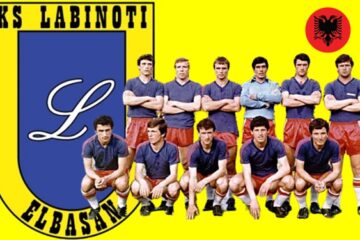The Endless Final of “Copa America”!

The Endless Final of “Copa America”!
America’s Cup, is the oldest competition for national teams in the world. The first edition of the event dates back to 1916, when the idea launched by the Argentine federation to commemorate the first centenary of national independence was developed.
The CONMEBOL Copa América is not only the oldest national team tournament in the world, but it is also one of the most difficult competitions in existence. Proof of this is that neither Diego Maradona nor Pelé – the best footballers in history, both world champions – were not able to lift the trophy.
I think that the CONMEBOL, Copa América is that tough, that demanding, because all the South American teams are in it. In a tournament that is only South American, in addition to the best talent, the determination in every play and dedication until the last minute are guaranteed.
Nobody gives up, nobody gives away, nobody gives in.
There are thousands of stories in the CONMEBOL Copa América, a tournament that should fill all South Americans with genuine pride. Because the history of the Copa América is history is a way of learning and also of forging an identity. To know that Latin America are not better or worse than anyone else, but they are different, distinct. We believe that South Americans do not watch or play football like Europeans or Asians. They have unique characteristics that are only theirs, and that range from natural ability with the ball to the codes of companionship that are formed on the field, in each game.
Football entertains us, but it also teaches us values and principles, it drives us to overcome barriers, it inspires us to work to be better every day.
The CONMEBOL “Copa América” is full of these stories, of these examples. All the great stars of the continent played in this tournament, one of the most prestigious in the world.
And it is the best because South Americans feel this sport differently. On the fields, in the streets, on the beaches, in any space where a ball can roll, football is breathed throughout South America. It is one of our treasures and, as such, it must be taken care of.
In this article we will focus on the third edition of this trophy. In the endless final of 1919.
In this edition is a detail covered by the dust of oblivion that is now not remembered in more than a hundred years that have passed. That very distant year, precisely on May 29, the longest final match in the entire history of Copa America would take place: 150 minutes of play!
South America Cup, as it would be called at the very beginning, it was an invitational tournament.
In those distant times, football, which had been invented by the English, was very different from today. The players were amateurs, that is, they were not paid for playing and had to work at other jobs to be able to live. The stadiums, the playing fields, the ball, the shirts, the boots were also totally different from those of today.
In that 3-erd South American championship, Brazil played a great tournament in their country and tied for first place with the powerful Uruguay.
We will tell what happened next as below.
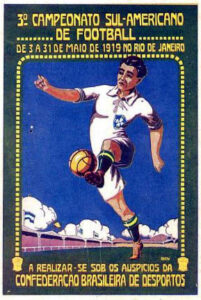
The third edition of the “Copa America” was to be held in Brazil from May 11-29, 1919. In fact, this edition was scheduled to take place a year earlier, in 1918, but the organizers were forced to postpone it in 1919 due to an unprecedented flu epidemic.
Only 4 teams participated in this edition and all the matches took place in Rio De Janeiro.
On May 11, in the presence of 20,000 ardent fans, Brazil stormed, destroying Chile 6-0. The locals had closed the first half 3-0. The goals were scored by: Friedenreich 19`, Neco 21`, Friedenreich 38`, Friedenreich 76`, Haroldo 79`, Neco 83.
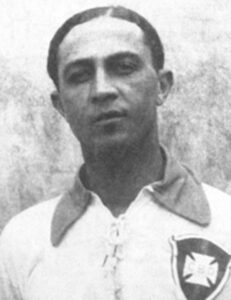
Artur Friedenreich, the Brasilian star
In Brazil, one player stands out, Artur Friedenrich, who will become the best scorer of this tournament and based on statistics, this player will be considered the best Brazilian scorer of all time.
True!
According to “The Fédération International de Football (FIFA) recognizes Friedenreich as the all-time leading goal scorer for Brazil with 1,329 goals! Pelé is Brazil’s all-time top goal scorer for the national team with 77 goals in 92 games. He held the record for over 60 years until Neymar surpassed him in 2023.
Now let’s go back to our story!
Two days later, on May 13, is the big clash between Uruguay, the winner of the first two editions, and Argentina. The Uruguayans win the match with a score of 3-2!
They win again in the second match against Chile
(2-0) on May 17. Uruguay now leads with 4 points and waits for Brazil, what will they do on May 18, where the match against ARGENTINA is scheduled.
And Brazil gives convincing evidence by beating Argentina 3-1, in the presence of 22,000 fans. The goals are scored by Héitor Domingues 22`, Amílcar 57`, Izaguirre 65` (for Argentina) and Millon 77`
One fact should be mentioned, regarding the number of attendees. It is only the third edition of this cup, and the number of viewers is high for the time, which is a record.
Now Brazil and Uruguay have 4 points each and await the challenging match between them, which will be considered a final in the case of a winner, despite the fact that it is the last match in the unique group.
Maj 26, 1919. Rio de Janeiro, das Laranjeiras!
In the presence of 23,000 crazy fans, Brazil and Uruguay take to the field with these formations:
BRA: Marcos – Píndaro, Bianco – Sergio I, Amílcar, Fortes – Millon, Neco, Friedenreich, Héitor Domingues, Arnaldo
URU: Saporiti – Varela, Foglino – Naguil, Zibechi, Vanzzino – Pérez, H.Scarone, C.Scarone,Gradín, Marán
The referee of this very important meeting is the Englishman: Robert L. Todd, with two sides, Miguel Guerrero from Chile, and Carlos Izaguirre from Argentina.
The match looks like a real battle, supported by the enthusiastic attendees. And before 13 minutes have passed, the Uruguayan Gradin scores 1-0 for his team. Four minutes later, Scarone makes it 2-0 for Uruguay.
However, there is plenty of game to reach a final score.
The Brazilian crowd that follows the match seems to fall into silence. Despite the two-goal disadvantage situation, Brazil is not discouraged. And in fact, in the 29th minute, Neco reduces the difference to 1-2, closing the first 45 minutes with this score.
The match continues to be combative in the second half, with the persistence of the Brazilians to equalize the match. It’s the 63rd minute, it`s a goal for Brazil. Neco scores again, tying the match 2-2, a result that does not change until the end of this meeting.
Both teams again have equal points, five each. Brazil with a goal average of 11-3, while Uruguay 7-4.

The Brazilian Neco, one of the protagonists in this edition of Copa America
The winner of this edition has not been decided yet. To see who will lift the trophy, a second Final is needed. Playoff match which is scheduled for May 29!
* * *

Sports facility Rio de Janeiro, das Laranjeiras!
The government announced a public holiday in public offices, banks closed their doors and newspapers urged businesses to do the same: business owners had a “moral obligation to follow with open sympathy everything that represents material progress for their country”, demanded O Paiz, from Rio, in its sports pages — which highlighted, in addition to football, rowing and turf, Rio’s preferences at the beginning of the century.
“We appeal to the businesses of this city to close their doors at 12 o’clock, contributing not only to the brilliance of the great match, but also to pay homage to the Uruguayan nation, now among us, represented by its brave sportsmen”, it continued.
At that time, attendance records were not usually very accurate: the press was informed of the revenue, but there was no strict control over who actually entered, or in which sectors of the stadium the public was concentrated.
It is believed that Laranjeiras received between 30 and 35 thousand fans on that afternoon of May 29, 1919, a Thursday that was transformed into an informal holiday in the then capital of Brazil. Without lighting and with the possibility of unlimited overtime in the event of a tie, the game was scheduled to start at 2 pm, seeking to make the most of the natural light of late autumn.
It was no longer just a game, of course, but a mobilization of an entire people. The lack of radio (a technology that would only begin to operate in the country in 1922) did not yet allow for “30 million people in action”, the Brazilian population of the time, but in Rio de Janeiro no one thought about anything else. The Light trams had a special frequency that day, leaving Praça da Bandeira every 10 minutes, and the buses gained express routes to the stadium.
The Rio de Janeiro public also had to learn how to get around a problem that was not very common at the time: scalpers selling counterfeit tickets at the stadium entrance, with several booklets of tickets printed overnight in the heat caused by the final. Even for those who were unable to enter the Laranjeiras, there were ways to follow the game: telephone lines were installed especially in the press box to bring news of the match as frequently as possible to every corner of the continent. International correspondents contacted their countries, and minute-by-minute news was transmitted by telegram to the different corners.
In Rio, the newspaper O Paiz invited fans without tickets to gather at the entrance to its newsroom, on Avenida Rio Branco, where minute-by-minute updates were posted on a board and “narrated” as they arrived from the stadium.
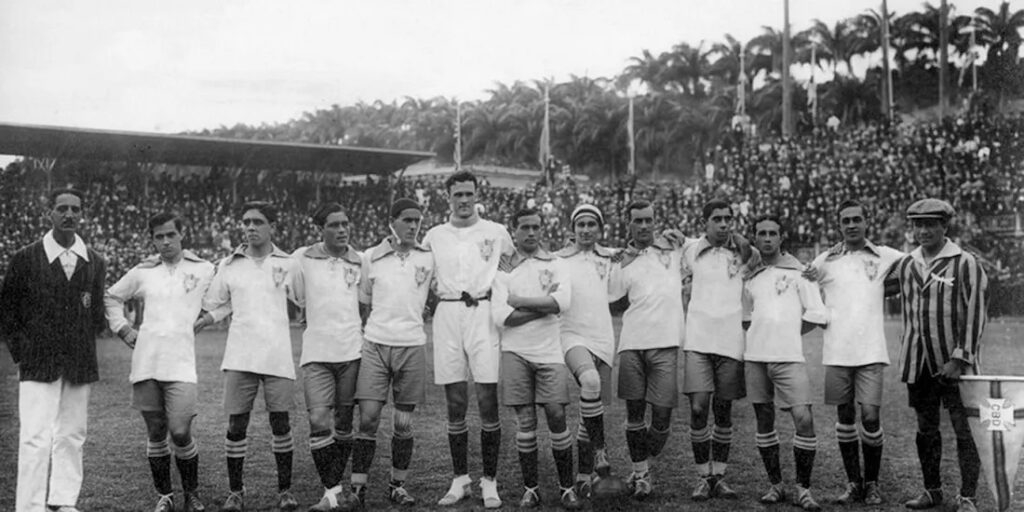
The Brazilian Team 1919
Under the guidance of the Argentinian referee, Juan Pedro Barbera, and the presence of 23.000 spectators, both teams take the field with these players:
BRA: Marcos – Píndaro, Bianco – Sergio I, Amílcar, Fortes – Millon, Neco, Friedenreich, Héitor Domingues, Arnaldo
URU: Saporiti – Varela, Foglino – Naguil, Zibechi, Vanzzino – Pérez, H.Scarone, C.Scarone, Gradín, Marán
From here begins the odyssey of an endless finale.
It was a battle to the death, and the afternoon would be long for both those in the stands and those trying to follow the game in other parts of the city: if the game ended in a draw, it would go into a half-hour extension. After that, if necessary, another half-hour extension would be played and, if no champion was decided, fifteen-minute mini-extensions would continue until the match had lasted three hours. If the tie remained, there would be a new game on another date, starting from scratch, with exactly the same rules.
There was no provision for anything equivalent to a penalty shootout or a golden goal. The only sudden death, in 1919, would probably have been that of a player, given the limited physical fitness of the time and the demands of a potentially endless game. When the time came, Brazil and Uruguay really did play for what seemed like an eternity, but not forever. The result of the rules that today would not be subject to a medical board would be the home team winning its first major title with the latest decisive goal in the history of the Copa América: Friedenreich, who, according to legend, was hungover after spending the night dancing at a ball in Catete, scored the winning goal in the 2nd minute of the third period of extra time — or, more precisely, in the 122nd minute of a game that would still go on until the 150th minute.
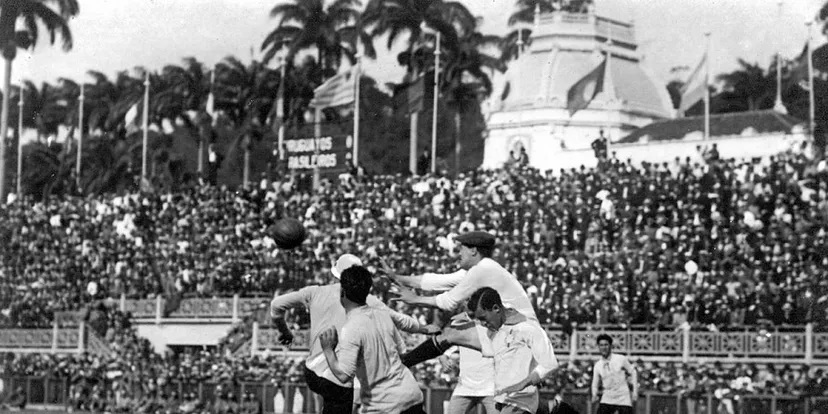
Without legs, the visitors would not be able to come back for more. Before that, with the teams already exhausted by the battle three days before, the game dragged on in a tight 0-0. The Brazilians, however, tried harder. The scout at the time recorded 17 offsides by the home team and 21 saves by the Uruguayan goalkeeper Cayetano Saporiti, against 10 offsides and 13 saves by the Brazilian goalkeeper, Marcos Carneiro de Mendonça, who would later become president of Fluminense.
It was precisely during one of Saporiti’s interventions that the winning goal came: after the Oriental player punched the ball away, the well-positioned Friedenreich shot straight into the corner. That afternoon helped transform him into the first great star of the Brazilian National Team to gain international prominence. In Banda Oriental, his tireless determination earned him the nickname “El Tigre”.
After 4 extra times of 15 minutes each. This was the longest match in the history of the Copa América, 150 minutes like no one else!
Friedenreich and Neco from Brazil will be the best scorers of the tournament with 4 goals and among others the two protagonists who gave the first title to the Brazilians.
The 1919 Copa América marks the first achievement of Brazilian football at a time when the sport was dominated by Uruguayans and Argentines.
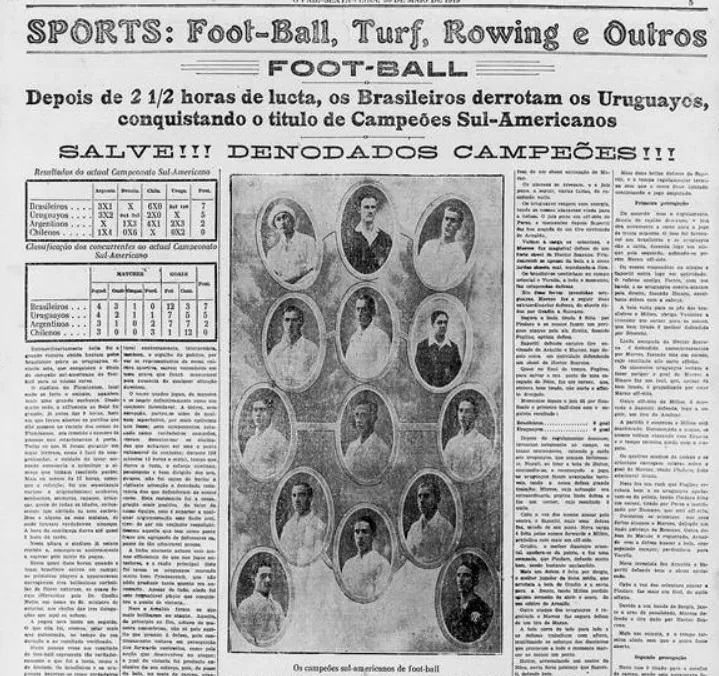
That victory gave rise to the famous choro “Um a zero” (One to Zero), by Pixinguinha and Benedito Lacerda, composed to celebrate the title — but the lyrics, by Nelson Ângelo, would only come much later, in the 1990s. Sometimes considered the first song dedicated to soccer in Brazil, “Um a zero” was not the only representation of the victory in popular art. The day after the victory, the samba “Goal Brasiliero” (Brazilian Goal), written by “Feijoada” and Luiz Nunes Sampaio, praised the champions: “The forwards / Make it in / Shots accurate / To haunt”, said the chorus of a song that listed, name by name, the players involved in the decision.

Brazil wins the 1-st ever international title in 1919!
At 5:27 p.m. sharp, when Argentine referee Juan Barbera ended the match with the victory by the minimum score, Brazilians would no longer set foot in the same country that had started the match. While the fans invaded the pitch and the streets of downtown Rio were filled with anonymous people jumping for joy at their national team’s first title, what would later come to be proclaimed as “the country of football” began to take shape.
After three years, the Brazilians will repeat this success for the second time, but then it would take a full 22 years to win the third title for the Seleção, that of 1949.
The exclusivity on this page is dated October 24, 2024
______________________
Sports Vision Plus / The Champion`s Hour in activity since 2013
Photos by © medium.com (Archivio Nacional)
Discover more from Sports Vision +
Subscribe to get the latest posts sent to your email.




